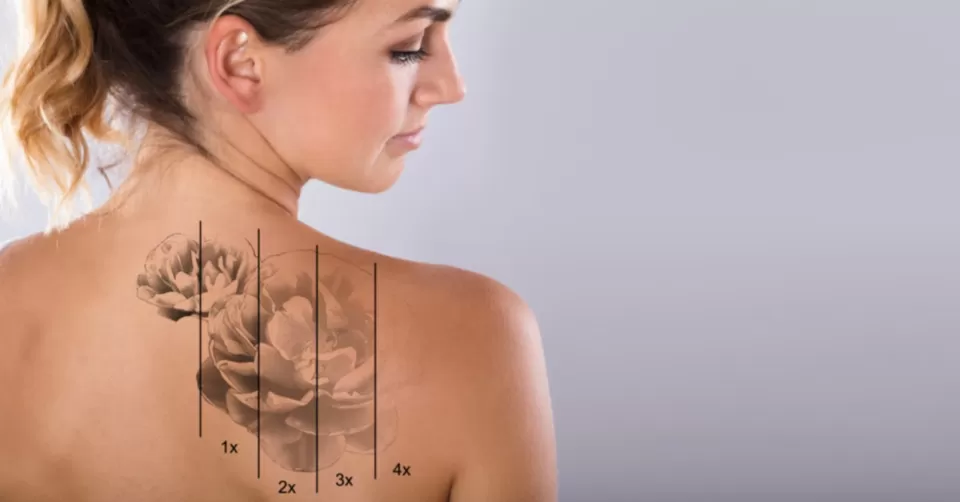
Rejuvi tattoo removal is a popular method for eliminating unwanted tattoos. It uses a unique technique where a solution is injected into the skin to break down the ink, which is then naturally expelled from the body over time. While Rejuvi tattoo removal is generally considered safe, like any procedure, it can come with certain side effects. Understanding the duration and intensity of these side effects can help individuals prepare and take proper care during the healing process. In this article, we will discuss the common side effects of Rejuvi tattoo removal(العلاج بالليزر في دبي) and how long they typically last.
Understanding the Rejuvi Tattoo Removal Process:
Before diving into the side effects, it's important to understand the process itself. Rejuvi tattoo removal works by creating a reaction between the tattoo ink and the solution injected into the skin. The ink is broken down into small particles, which are then naturally removed by the body. Unlike traditional laser removal, which relies on heat to break down the ink, Rejuvi uses a different method that doesn't involve any burning or scarring.
The procedure is typically done in several sessions, depending on the size and complexity of the tattoo. Each session can last anywhere from 20 minutes to an hour, and there may be some discomfort during the treatment, but it is usually well-tolerated. While the process itself is fairly straightforward, the healing time and side effects can vary from person to person.
Common Side Effects of Rejuvi Tattoo Removal
Swelling and Redness:
One of the most common side effects after a Rejuvi tattoo removal session is swelling and redness at the treatment site. This is a normal response as the skin reacts to the solution injected into it. The swelling typically subsides within a few hours to a day, while the redness may linger for a bit longer. In most cases, this side effect is mild and can be managed with basic aftercare measures, such as gentle cleaning and keeping the area moisturized.
Scabbing and Crusting:
As the ink particles are broken down, they can form a crust or scab on the skin. This scabbing is a natural part of the healing process, as the body works to expel the ink. It’s crucial to avoid picking at the scabs to prevent scarring or infection. The scabbing usually begins to peel off within a week or two after the treatment, leaving behind healed skin.
Temporary Hyperpigmentation or Hypopigmentation:
Some individuals may notice a change in skin color after the procedure, either in the form of hyperpigmentation (darkening of the skin) or hypopigmentation (lightening of the skin). These changes are typically temporary and should fade within a few weeks to months as the skin heals. However, in rare cases, the discoloration may persist for longer periods. It's important to protect the treated area from sun exposure to avoid exacerbating these pigment changes.
Blistering or Fluid Buildup:
Blistering is another possible side effect of Rejuvi tattoo removal. While rare, some individuals may experience small blisters forming in the treated area. These blisters usually appear within the first few days after treatment and can be filled with fluid. If you notice blisters, it’s important to let them heal naturally without attempting to pop or disturb them. The fluid will eventually absorb back into the skin as healing progresses.
Mild Pain or Discomfort:
After the treatment, some individuals may experience mild pain or discomfort in the treated area. This sensation is often described as similar to a sunburn and can last for a few hours to a couple of days. Over-the-counter pain relief can be used to alleviate any discomfort, but it is usually not intense enough to require more than basic pain management.
Duration of Side Effects: How Long Do They Last?
Now that we’ve discussed the common side effects, let’s focus on how long they typically last. The duration of side effects varies from person to person, but most side effects from Rejuvi tattoo removal are temporary and should improve with time.
Swelling and Redness: Swelling and redness typically last for 1 to 3 days, depending on the intensity of the reaction. In some cases, the redness may persist for a week or longer, but it usually fades without intervention.
Scabbing and Crusting: Scabbing can last from 7 to 14 days. As the skin heals, the scabs will fall off naturally, revealing smoother skin underneath.
Pigmentation Changes: Any changes in skin pigmentation, whether darkening or lightening, usually fade within a few weeks to a few months. The duration depends on individual skin characteristics and how well the skin responds to the treatment.
Blistering or Fluid Buildup: Blisters typically heal within 7 to 10 days. As long as they are not disturbed, they should not cause long-term issues.
Pain or Discomfort: The pain or discomfort usually subsides within a few hours to a couple of days after the procedure, and no long-term pain should be expected.
Proper Aftercare for Minimizing Side Effects:
To minimize the duration and intensity of side effects, it’s important to follow the proper aftercare instructions. Some general tips for managing side effects include:
Keep the area clean and moisturized. Gently wash the treated area with mild soap and water, and apply a soothing moisturizer to prevent dryness and cracking.
Avoid direct sun exposure. Protect the treated area with a broad-spectrum sunscreen to avoid further pigment changes or irritation.
Refrain from picking at scabs or blisters. Let the body heal naturally to avoid scarring or infection.
Wear loose clothing. If the tattoo is on an area that might be irritated by tight clothing, make sure to wear loose, comfortable clothes to avoid friction.
When to Seek Additional Help:
While side effects are generally mild and temporary, there are certain signs that may indicate a more serious issue. If you experience severe pain, excessive swelling, signs of infection (such as pus, increased redness, or fever), or if the side effects last significantly longer than expected, it's important to seek advice from a professional. Monitoring the healing process is key to ensuring that complications are caught early.
Final Thoughts on Rejuvi Tattoo Removal Side Effects:
Rejuvi tattoo removal is a relatively safe and effective method for tattoo removal. While the side effects are a natural part of the healing process, they are typically short-lived and can be managed with proper aftercare. Understanding how long the side effects last and how to take care of your skin during this time can help make the process smoother and more comfortable. Ultimately, most individuals can expect the side effects of Rejuvi tattoo removal to last only a few weeks, with the tattoo fading over several sessions.
Remember that everyone's skin heals at different rates, so the duration of Rejuvi tattoo removal side effects may vary. Taking care of your skin and following the right aftercare routine can help minimize discomfort and ensure the best possible results.













